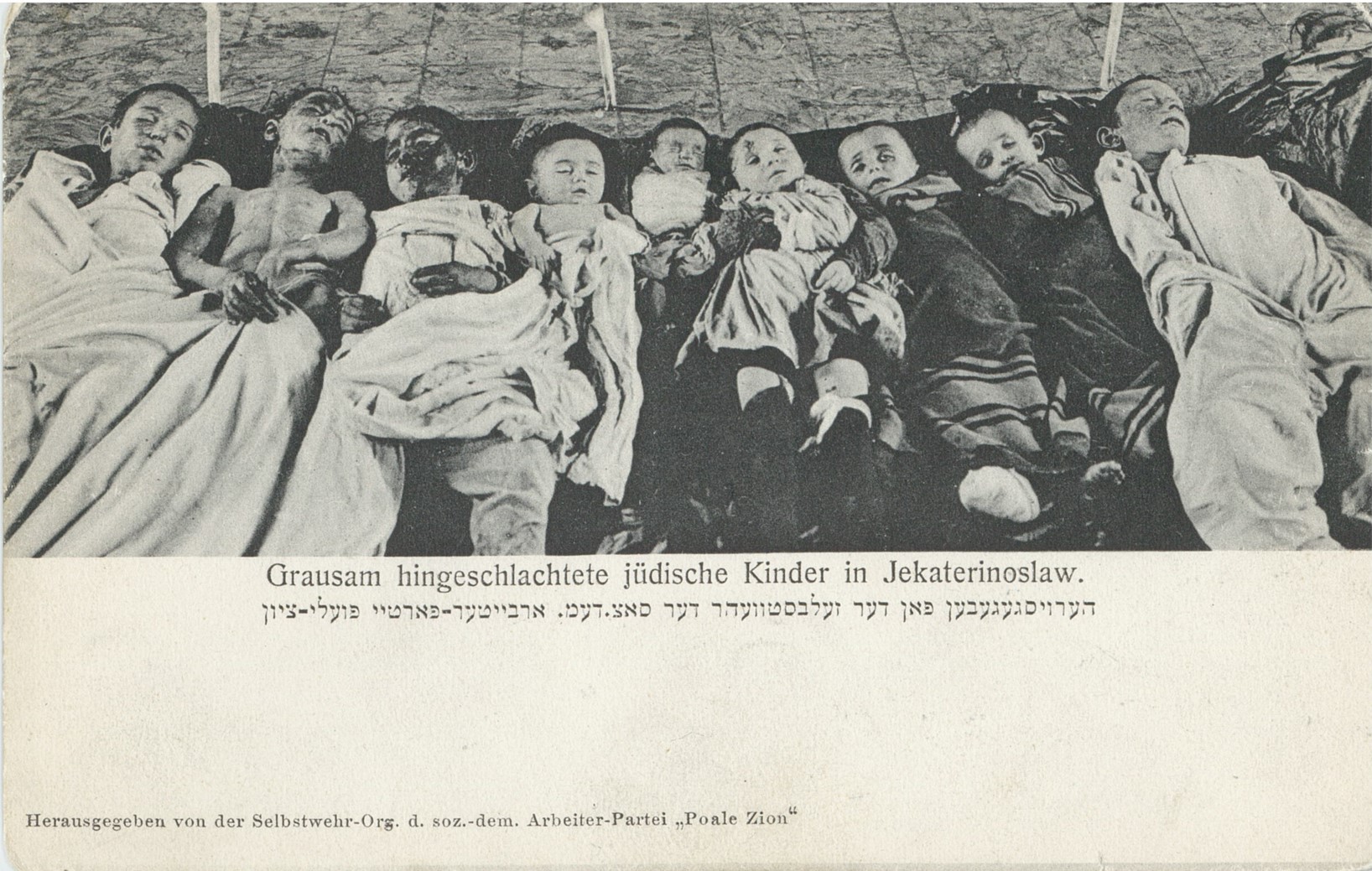At the end of the 18ер century the territory of one of the largest countries in Europe – the Polish-Lithuanian Commonwealth – was divided by three monarchies - the Austrian and Russian empires and the Kingdom of Prussia. As a result, the Jews who lived in the territory of Right Bank Ukraine for many centuries, despite their reluctance, became subjects of the Russian emperors. In fact, from the very beginning, the Empire employed a number of discriminatory measures against the Jews. In particular, the so-called Strip of Settlement was introduced – a territory beyond which Jews had the right to settle only with a separate permit. Subsequently, the Russian authorities limited the access of Jews to education, public service, etc.
The government's discriminatory policy not only narrowed the social prospects for the development and integration of Jews into society, but also had a direct impact on the creation of a negative image of “foreigners” in public perceptions – the legal category to which, according to Russian legislation, Jews were included.
Given the lack of opportunities to integrate and realize themselves, part of the Jewish youth enthusiastically embraced socialist and anarchist ideas that proclaimed the prospect of a fundamental change in the social system, and joined the activities of illegal political groups. Another version of the future was offered to Jewish boys and girls by Zionism, a socio-political movement of European Jews, which proclaimed the main goal of creating its own independent Jewish state, which should unite all the Jews of the world.
It is noteworthy that it is in our city on the border of the 19th and 20th centuries. the first cells of the future party “Poalei-Zion” (from the Hebrew “Workers of Zion”) appeared. Its ideology combined the ideas of social reform, the creation of a just society with the desire to realize Jewish autonomy on the territory of Palestine at the time.
On October 17, 1905, as a result of the deepening political, social and economic crisis, the authorities of the Russian Empire were forced to declare certain concessions. On this day, the Russian Tsar Nicholas II issued the Manifesto, which proclaimed a number of democratic freedoms in the Empire – assembly, press, religion, unions and associations. In other words, Russian imperialism finally decided to declare fundamental civil liberties, which have been an integral part of life in many countries of Western Europe and the world for decades.
The news about the Manifesto, which some of the political figures of the time called the “First Russian Constitution”, was enthusiastically received by a part of society that sought democratization and change, as well as by supporters of left parties, who saw in the Manifesto a sign of the approach of rapid fundamental revolutionary changes.
According to the memories of contemporaries, the public space of the then Katerynoslav – primarily its parks and part of the streets – became the place of numerous rallies, demonstrations and gatherings. Later, October 18 and 19, 1905 will be called “Freedom Days”. However, almost immediately, the sense of imminent change was replaced by despair from the tragedy that had engulfed the city. During October 21–23, 1905, Katerynoslav became the scene of an anti-Jewish pogrom, which took place at the initiative of supporters of the Russian monarchy, as well as under the conditions of connivance of the actions of the pogromists by the local authorities, which often interpreted the Jews as the main driving force of the revolution. 67 Jewish residents of the city became victims of the pogrom, and more than 100 were injured. As a result of the pogrom, houses, businesses and trade establishments belonging to the city's Jews were looted. It is noteworthy that there were practically no political activists among the victims, instead, the majority were Jews who did not belong to any anti-government groups.
The exhibition of Museum “Jewish Memory and Holocaust in Ukraine” contains a number of exhibits that testify to the dramatic course of events in October 1905. In particular, postcards “Victims of the Pogrom in Katerynoslav”, which were printed on the initiative of the “Poalei Zion” party. On them are photos of pogrom victims, including children and teenagers – the most vulnerable part of the population, who could not protect themselves from the violence of the crowd. The postcards were meant to serve two purposes. First, the funds from their sale were directed to help the families of the victims. Secondly, the use of these postcards, in particular, during international postal shipments, should have informed the world about the tragedy of the Jews of Katerinoslav. The Jews of Ukraine hoped that the democratic countries of Europe and the United States would influence the policy of the Russian government and force an end to the violence. Unfortunately, despite the numerous manifestations of the Jews of Great Britain and the USA, appeals to the political leaders of their countries, already the following year the world shuddered at the news of the bloody Jewish pogrom in the city of Bialystok (now Poland), provoked by the local administration. By the way, you can learn more about it by watching the video “Secrets of the pogrom in Bialystok” on the Museum's YouTube channel.
Today, these postcards, as well as other exhibits, expositions, remain witnesses of the terrible page of anti-Semitic persecution that befell the residents of our city.
Yehor Vradii

